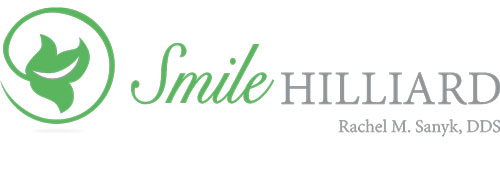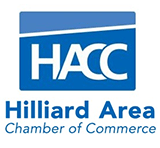While many people believe they know how their medical insurance works, they tend to be iffy on the details of dental. To help you have a better understanding of your dental insurance, we’ve compiled this helpful primer that answers typical questions we receive on the topic.
Do You Take My Insurance?
One of the most common things patients ask is whether we accept or take their insurance. Typically, the answer is yes.
Smile Hilliard is able to accept any Preferred Provider Organization (PPO) dental benefit plan that allows you to select the dental provider of your choice. If you have a PPO plan, we can file claims and accept assignment of benefits on your behalf.
Please note that although we always do our best to utilize your insurance benefits whenever possible, we are not an “insurance-driven” practice. By that, we mean we don’t make treatment recommendations based on insurance plan limitations; your oral health is our biggest priority.
What’s the Difference Between an In-Network and Out-of-Network Provider?
An in-network provider is a dentist who’s agreed to a contract with an insurance company. This is essentially a give-and-take relationship. The contracted dentist agrees to accept discounted rates for services in exchange for being listed as a “preferred provider” by that insurance carrier. And, it’s a mutually beneficial arrangement. Not only does it keep costs down for the insurance company, it also helps dentists keep their chairs full by bringing patients to their office.
An out-of-network provider is a dentist who hasn’t agreed to a contract with an insurance company and therefore, is not required to follow its treatment rules or fee structure. Many insurance companies put strict limitations on the types of care patients receive. Non-contracted dentists aren’t required to follow these restrictions, meaning patients can make decisions with their dentist regarding their care rather than an insurance company.
You may bear less of financial responsibility for care at an in-network provider, but not always. Often, we find a patient’s costs are no different in-network when compared to out-of-network. Not all insurance companies are the same, and some offer better benefits than others. These benefits are solely based on what your employer has negotiated with the insurance company.
We’ll always present you with a treatment plan that includes an estimate of your cost prior to completing any dental work.
How do I know if My Dental Work is Covered by My Insurance Provider?
Dental insurance is complicated, highly variable, and has many inherent flaws. And really, it’s not actually insurance at all – it’s more of a discount plan. Insurance companies make their plans confusing on purpose so patients become frustrated and don’t get the treatment they need, creating huge profits for the insurance industry.
At Smile Hilliard, we do an extensive verification of your dental benefits prior to your first appointment, which allows us to give you the most accurate dental estimate possible. Our goal is to help you receive the maximum value of your dental benefits—after all, you’ve paid for them!
No one likes getting a surprise bill they weren’t expecting. We’re proud to say that due to our detailed verification process, your dental claims will almost always pay exactly as estimated in our office.
What are Dental Maximums & Deductibles
Dental Plan Maximums
A dental plan’s maximum is the most the insurance company will pay toward claims during a given benefit period.
A benefit period is generally based on the calendar year, but can also be based on a fiscal year or plan year starting in a month other than January. Most dental plans only allow for a maximum benefit of $1,000 per year per covered individual. Unfortunately, insurance companies have not raised these maximums in decades, and the annual limit can be reached quite quickly when significant treatment is needed.
Additionally, due to today’s hectic lifestyles, many patients don’t use their dental benefits before they expire. When this happens, the patient loses and the insurance company wins.
Dental Plan Deductibles
A dental plan’s deductible is the amount the insurance company requires the patient to pay before their insurance makes payments towards treatment.
Typically, the deductible applies to basic and major services only, and does not apply to preventative services, such as exams and cleanings. Under some plans, the deductible may apply to some or all x-rays, or all preventive and diagnostic services as well. Once the deductible has been met, the insurance company begins to pay their percentage of eligible services.
Insurance companies often have many rules and restrictions which allow them to avoid paying benefits towards your treatment. Examples of these include:
- Frequency limits for services
- Waiting periods
- Missing tooth clauses
- Alternate benefits allowances
It’s a good idea to read the fine print of your policy documents so you can be aware of these restrictions. These rules are determined solely between your employer and the insurance company and are based on the plan’s quality.
What is a Benefit Pre-Estimate?
A benefit pre-estimate is an estimate of what the insurance company may pay and what portion the patient will have to pay before any services are rendered.
For some insurance carriers, this process is quick, but for most, it takes up to 30 days. Normally, a pre-estimate is only sent if the diagnosed treatment is unusual or complex, if the treatment is scheduled very far in advance, or if there is another reason to question coverage.
With our detailed verification process, a pre-estimate for routine services is usually not necessary. Waiting for a pre-estimate is a tactic used by insurance companies to make patients delay the treatment they need.
Lastly, a pre-estimate is not an actual guarantee of benefits. An insurance company only determines payable benefits once an actual claim has been submitted and processed.
How Are Benefits Coordinated When I Have a Secondary Insurance Plan?
Coordination of Benefits occurs when a patient is entitled to benefits from more than one dental plan. The two plans will coordinate benefits with each other to eliminate benefits duplication. Normally, secondary insurance will not accept a claim until after it’s received proof that the primary claim has been processed.
Most dental plans have non-duplication of benefits and/or carve-out clauses that limit payments. It’s nearly impossible to predict what secondary insurance may pay until after the primary insurance carrier has paid its portion.
Although we’re unable to estimate secondary insurance benefits, we’ll still file these claims on your behalf. If your secondary insurance pays additional benefits, we’ll contact you to refund any credit balance that results, or if you prefer, keep it on your account to be applied toward future treatment. You will always receive the full benefit allowance of both your dental plans.
As you can see, dental insurance is complicated! For additional information, a great article that discusses this topic in more detail is available here: The Trouble With Dental Insurance.
Smile Hilliard is committed to managing your dental benefits for you, so you can get the most from your plan while receiving excellent dental care. If you ever have questions about your benefits plan, please contact us and we’ll be happy to answer all your questions.





